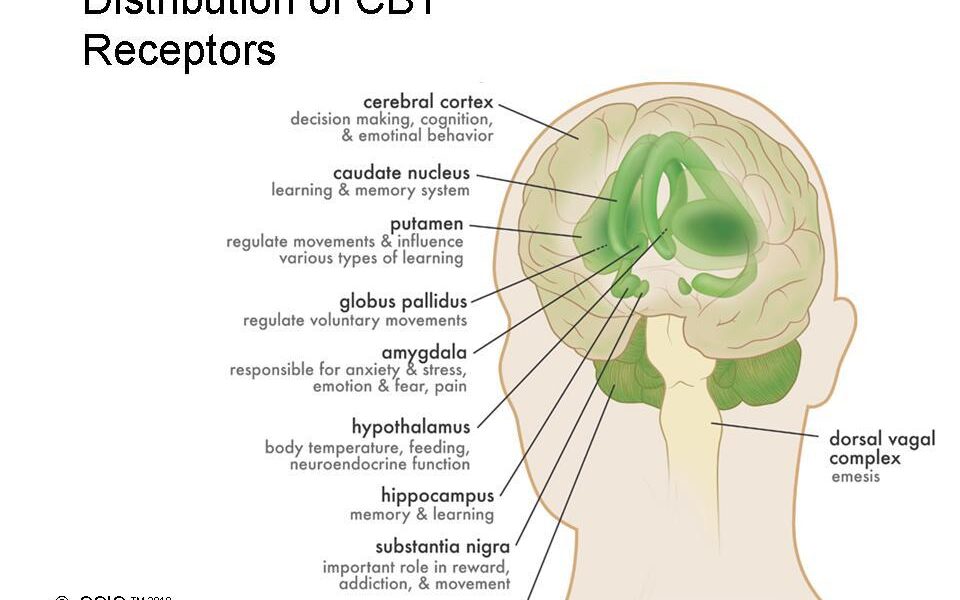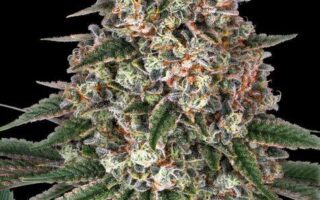In the ever-evolving landscape of cannabis research and public perception, the spotlight often shines on one intriguing compound: tetrahydrocannabinol, more commonly known as THC. This powerful active component of marijuana has sparked monumental shifts in medicine, law, and culture. As conversations continue to swirl around its therapeutic benefits and recreational uses, understanding THC’s role becomes essential for both casual users and those exploring its potential for healing. In this article, we will delve into the science behind THC, its effects on the human body, and the broader implications of this fascinating compound in our society today. Join us as we unravel the complexities of marijuana’s active ingredient and its impact on our lives.
Table of Contents
- The Science Behind Cannabinoids and Their Effects
- Understanding Tetrahydrocannabinol and Its Role in Marijuana
- Exploring Cannabidiol: Therapeutic Potential and Benefits
- Guidelines for Responsible Use and Consumption of Marijuana Products
- Q&A
- Key Takeaways
The Science Behind Cannabinoids and Their Effects
Cannabinoids are the active compounds found in marijuana, and they interact with the body’s endocannabinoid system (ECS) to produce a range of effects. This system plays a vital role in maintaining homeostasis, or balance, within the body. When cannabinoids bind to the ECS receptors, they can influence various physiological processes, leading to outcomes such as:
- Pain relief: Cannabinoids, particularly THC, may help alleviate chronic pain.
- Appetite stimulation: Known commonly as “the munchies,” this effect is especially noted with THC.
- Anxiety reduction: Some cannabinoids can produce a calming effect, though results can vary.
- Anti-inflammatory properties: CBD, another major cannabinoid, exhibits potential in reducing inflammation.
Different cannabinoids have unique properties due to their chemical structures. For instance, THC is known for its psychoactive effects, while CBD is non-psychoactive and often praised for its therapeutic qualities without the ”high.” Recent studies have begun to explore the entourage effect, which suggests that a combination of cannabinoids and terpenes can enhance therapeutic benefits. Below is a simple overview of some key cannabinoids and their primary effects:
| Cannabinoid | Main Effects |
|---|---|
| THC | Psychoactive, euphoria, appetite stimulation |
| CBD | Anti-inflammatory, anxiety relief, non-psychoactive |
| CBG | Neuroprotective, antibacterial properties |
| CBN | Potential sedation, sleep aid |
Understanding Tetrahydrocannabinol and Its Role in Marijuana
Tetrahydrocannabinol, commonly known as THC, is the principal psychoactive component found in marijuana. When cannabis is consumed, THC interacts with the body’s endocannabinoid system, which plays a crucial role in regulating various physiological processes. This interaction occurs primarily at cannabinoid receptors, particularly CB1 and CB2, leading to a myriad of effects on the mind and body. Users may experience a range of sensations, including euphoria, relaxation, altered sensory perception, and in some cases, increases in appetite, commonly known as ”the munchies.” The potency and effects of THC can vary significantly depending on the strain of the plant and the method of consumption.
In addition to its psychoactive properties, THC is gaining recognition for its potential therapeutic benefits. Research continues to unravel the complexity of this compound, revealing its capabilities in addressing various medical conditions. Some potential uses include:
- Chronic Pain Relief: THC may help alleviate pain by modulating pain perception in the brain.
- Appetite Stimulation: Useful in treating conditions like cancer and HIV/AIDS where appetite loss is common.
- Anti-Nausea Effects: Particularly beneficial for patients undergoing chemotherapy.
These properties have led to the development of various cannabis products, including oils, edibles, and capsules, designed to deliver THC in user-friendly formats. Understanding how this compound operates within the body is essential for both recreational and medical users alike, empowering them to make informed choices about their cannabis consumption.
Exploring Cannabidiol: Therapeutic Potential and Benefits
Cannabidiol (CBD), a non-psychoactive compound derived from the cannabis plant, has garnered significant attention for its potential therapeutic applications. Unlike its more famous counterpart, THC, CBD does not induce a high, making it a more approachable option for those seeking relief from various ailments without the intoxicating effects commonly associated with marijuana. Research suggests that CBD may offer an array of benefits, including:
- Alleviating Anxiety: Many studies indicate that CBD can reduce anxiety and improve mood, making it a popular choice for individuals looking to manage stress.
- Pain Relief: Its anti-inflammatory properties have been linked to pain management, providing an alternative for those with chronic pain conditions.
- Improved Sleep Quality: Users often report enhanced sleep patterns, which can be vital for overall health and wellness.
- Neuroprotective Properties: Preliminary research highlights CBD’s potential in treating neurological disorders, such as epilepsy and multiple sclerosis.
As interest in CBD continues to grow, so does the necessity for education on its uses and benefits. The following table summarizes some of the key therapeutic effects and conditions that CBD may help manage:
| Condition | Potential CBD Benefit |
|---|---|
| Anxiety Disorders | Reduction of anxiety symptoms and improved mood |
| Chronic Pain | Decrease in inflammation and pain relief |
| Insomnia | Promotion of better sleep quality |
| Epilepsy | Seizure reduction and management |
Guidelines for Responsible Use and Consumption of Marijuana Products
When engaging with marijuana products, it is essential to prioritize safety and responsibility. Understanding your limits and the different strengths of products is crucial. Begin with a low dose and observe how your body reacts before escalating your consumption. Always consider the following best practices:
- Know your source: Purchase from licensed dispensaries that provide lab test results.
- Educate yourself: Familiarize yourself with various strains and their effects.
- Avoid combining substances: Mixing marijuana with alcohol or other drugs can enhance risks.
- Stay informed of local laws: Compliance with regulations ensures a safe experience.
Additionally, it is vital to consume marijuana products in a suitable environment to avoid potential negative interactions and consequences. Designate a comfortable space where you feel at ease, and never operate a vehicle or machinery under the influence. Here’s a quick reference table for responsible settings:
| Environment | Recommended Conditions |
|---|---|
| Home | Quiet, familiar surroundings with trusted friends. |
| Outdoor | Safe, secure spaces with minimal distractions. |
| Social Gatherings | Ensure a supportive atmosphere with like-minded individuals. |
Q&A
Q&A: Understanding the Active Component in Marijuana
Q: What is the primary active component in marijuana?
A: The primary active component in marijuana is tetrahydrocannabinol, commonly known as THC. THC is the compound responsible for the psychoactive effects associated with cannabis use.
Q: How does THC interact with the body?
A: THC interacts with the body by binding to cannabinoid receptors in the brain and throughout the nervous system. These receptors are part of the endocannabinoid system, which plays a role in regulating various physiological processes including mood, memory, and pain perception.
Q: Are there other significant compounds in marijuana?
A: Yes, besides THC, marijuana contains numerous other compounds called cannabinoids. One of the most notable is cannabidiol (CBD), which does not have psychoactive effects but is often associated with therapeutic properties. Together, THC and CBD, along with other cannabinoids and terpenes, contribute to the plant’s complex effects.
Q: What are some common effects of THC consumption?
A: The effects of THC can vary widely depending on the individual and the method of consumption. Generally, users may experience euphoria, relaxation, altered perception of time, and increased appetite. However, some may also experience anxiety or paranoia, particularly with high doses.
Q: Is THC the only reason people use marijuana?
A: While THC is a major reason many people use marijuana, others seek its potential therapeutic benefits, including pain relief, reduction of inflammation, and alleviation of anxiety. The presence of other compounds, particularly CBD, has also broadened the appeal of marijuana for medical use.
Q: Is THC responsible for the “high” associated with marijuana?
A: Yes, THC is primarily responsible for the “high” that many users report. Its psychoactive nature activates the brain’s reward system, leading to feelings of pleasure and enjoyment.
Q: What should someone know before using marijuana for the first time?
A: First-time users should start with a low dose to gauge their personal tolerance. It’s also advisable to familiarize oneself with the legal status of marijuana in their area, as well as potential health implications. Being in a safe and comfortable environment can also enhance the experience.
Q: Can THC be harmful, and are there risks associated with its use?
A: Like any substance, THC can have risks, especially with heavy or frequent use. Potential harms include the development of psychological dependence, impaired memory and cognitive function, and adverse reactions such as anxiety or paranoia. Users should be aware of these risks and consider their health history and personal circumstances before using marijuana.
Q: Are there different strains of marijuana that affect THC levels?
A: Yes, marijuana comes in various strains, each with differing THC content and effects. Sativa strains typically promote an uplifting experience, while indica strains tend to provide calming effects. Hybrid strains combine properties from both and can offer a unique experience tailored to user preferences.
Q: How is THC measured in marijuana products?
A: THC content in marijuana products is typically measured as a percentage of weight. Labels on cannabis products often indicate the THC levels, allowing consumers to choose products that align with their desired effects.
Q: Where can I learn more about the effects and uses of THC?
A: To learn more about THC and its effects, consider exploring reputable health websites, scientific studies, or seeking guidance from healthcare professionals knowledgeable in cannabis. Always aim for trusted sources to enhance your understanding and ensure safe practices.
By breaking down these questions, we can foster a clearer understanding of THC and its role in marijuana, helping to navigate the complex landscape of cannabis use responsibly.
Key Takeaways
In the intricate dance of chemistry and nature, the active component in marijuana takes center stage, captivating the minds of scientists, medical professionals, and enthusiasts alike. As we’ve delved into the multifaceted roles of cannabinoids, particularly THC and CBD, it becomes clear that these compounds hold vast potential, bridging tradition and innovation in the world of wellness.
As research continues to unfold, our understanding of marijuana’s active components expands, revealing new applications and benefits that may illuminate pathways in both medicine and recreation. The journey does not end here; it is just the beginning of exploring the rich tapestry of cannabinoids that nature has bestowed upon us. Whether as a subject of curiosity, a tool for healing, or an aid in relaxation, the conversation surrounding marijuana and its active components is sure to evolve, inviting each of us to join this unfolding narrative.
In an era of discovery, let’s remain open to the possibilities, questioning and learning as we embrace the complexity of the plant, its compounds, and their profound impact on our lives.



